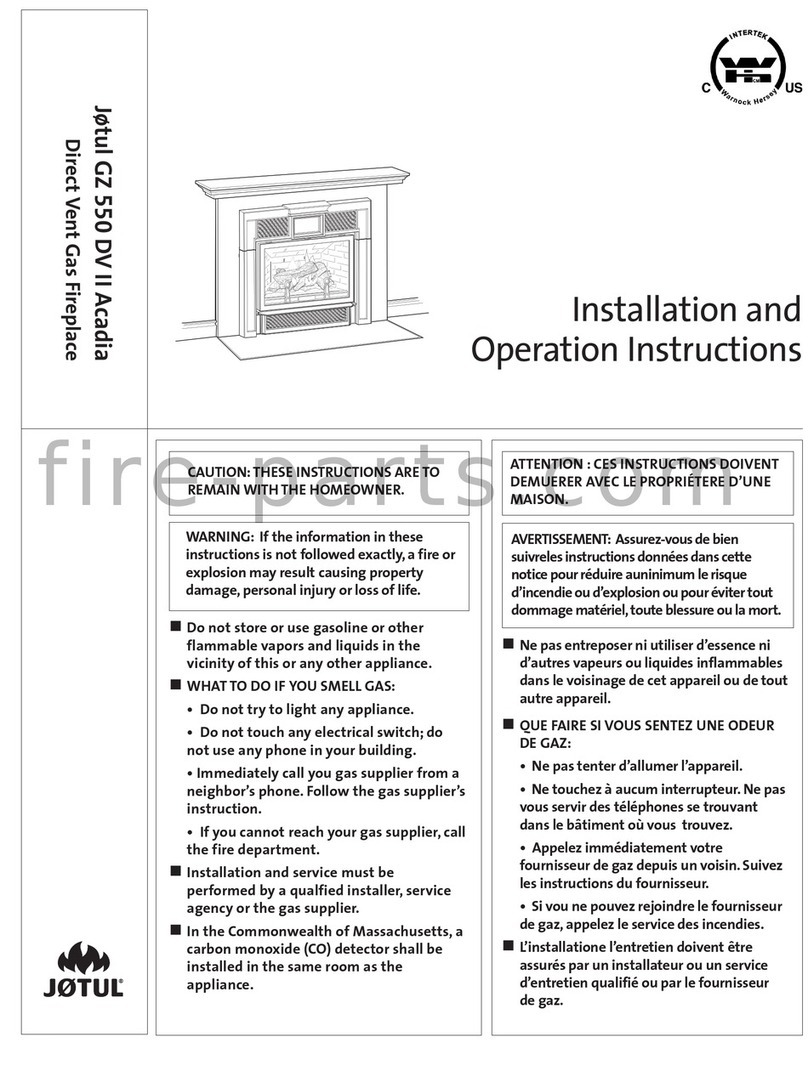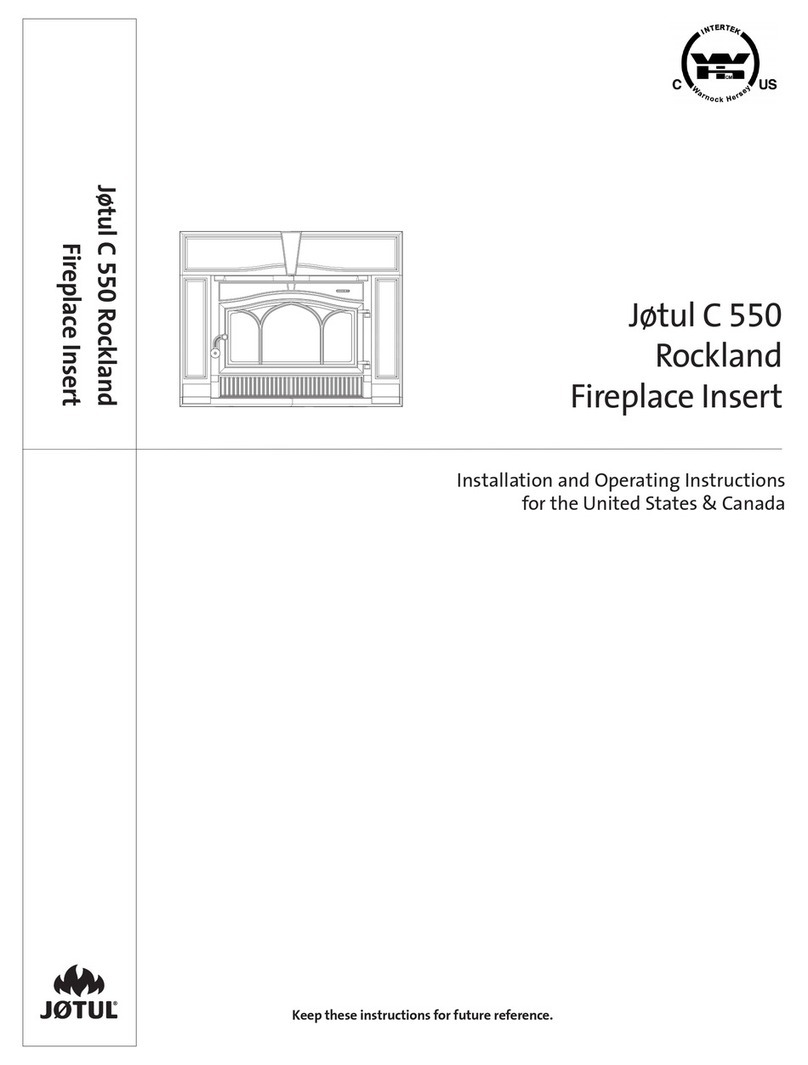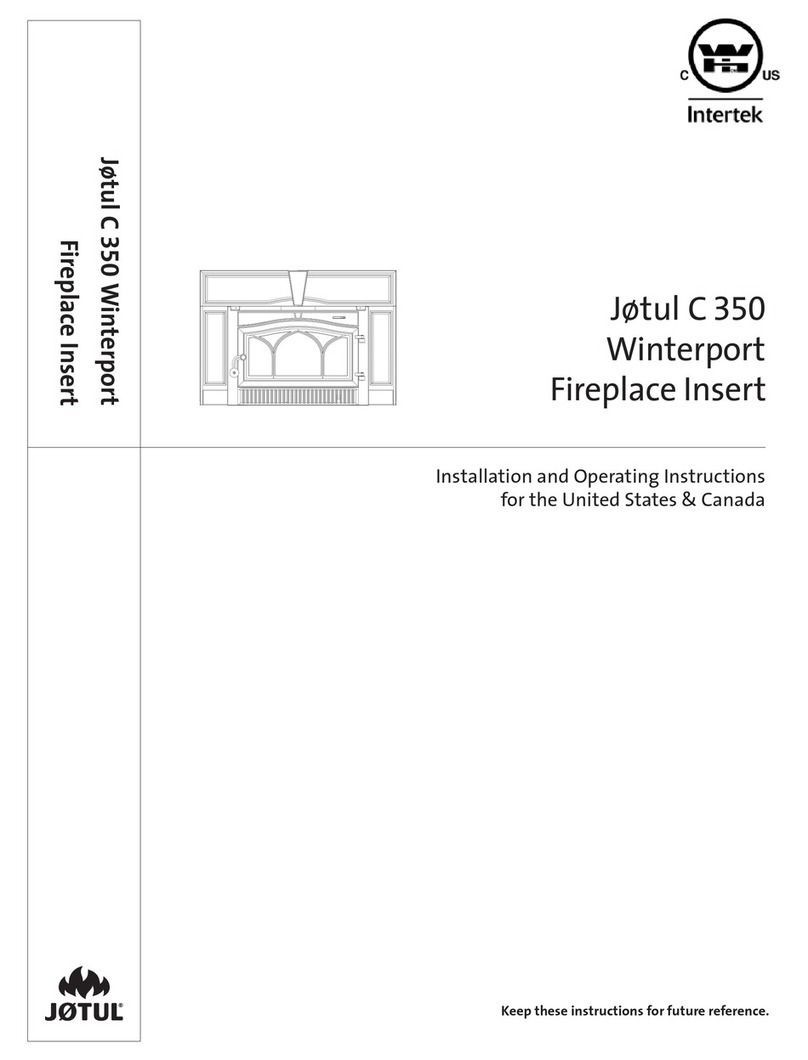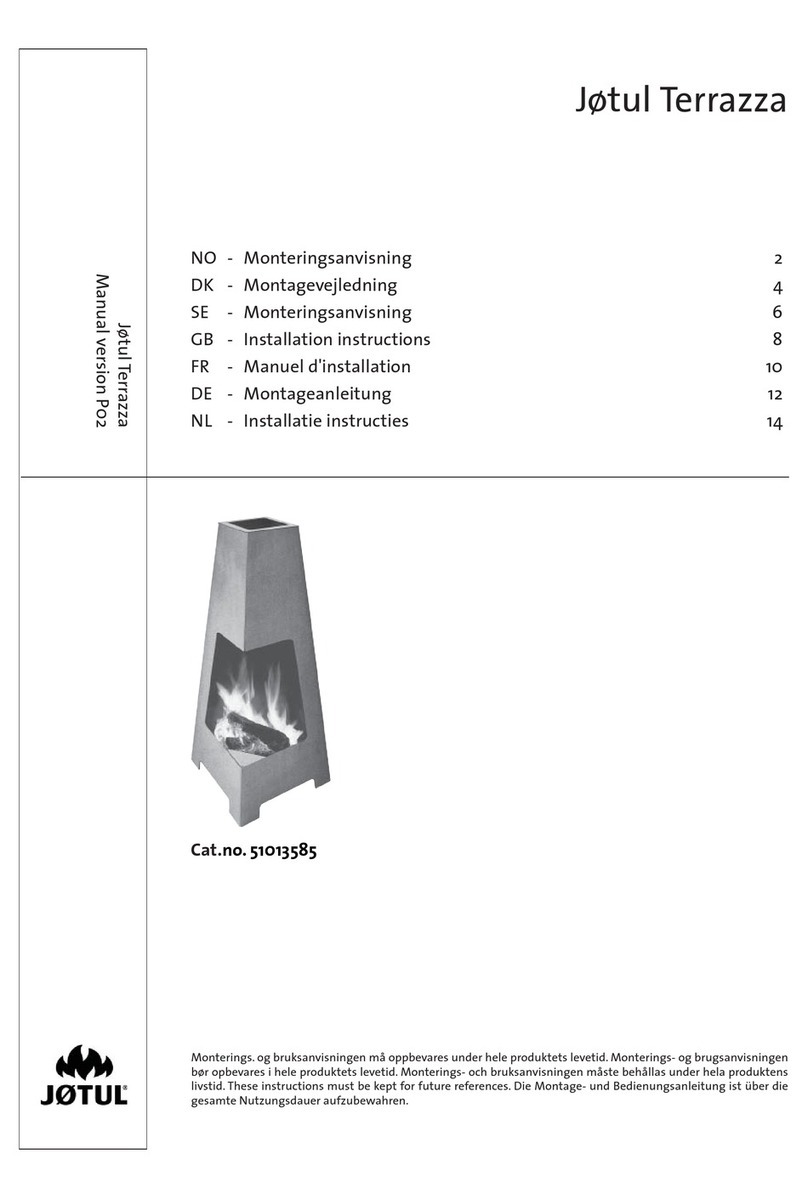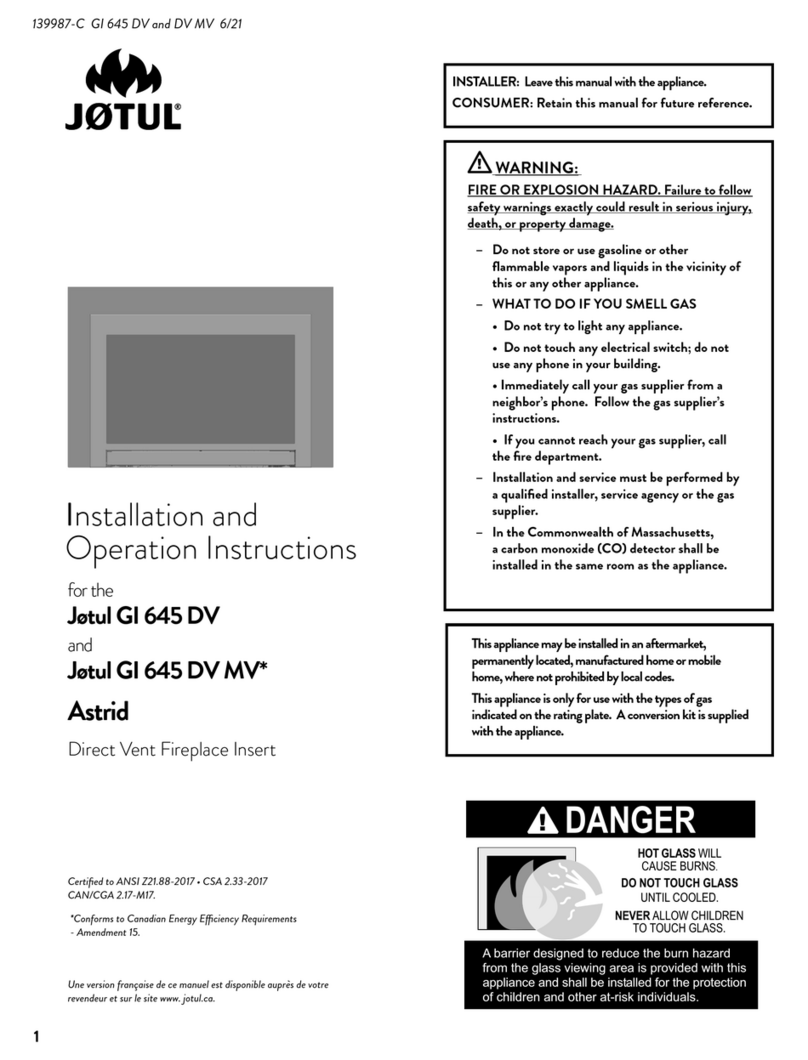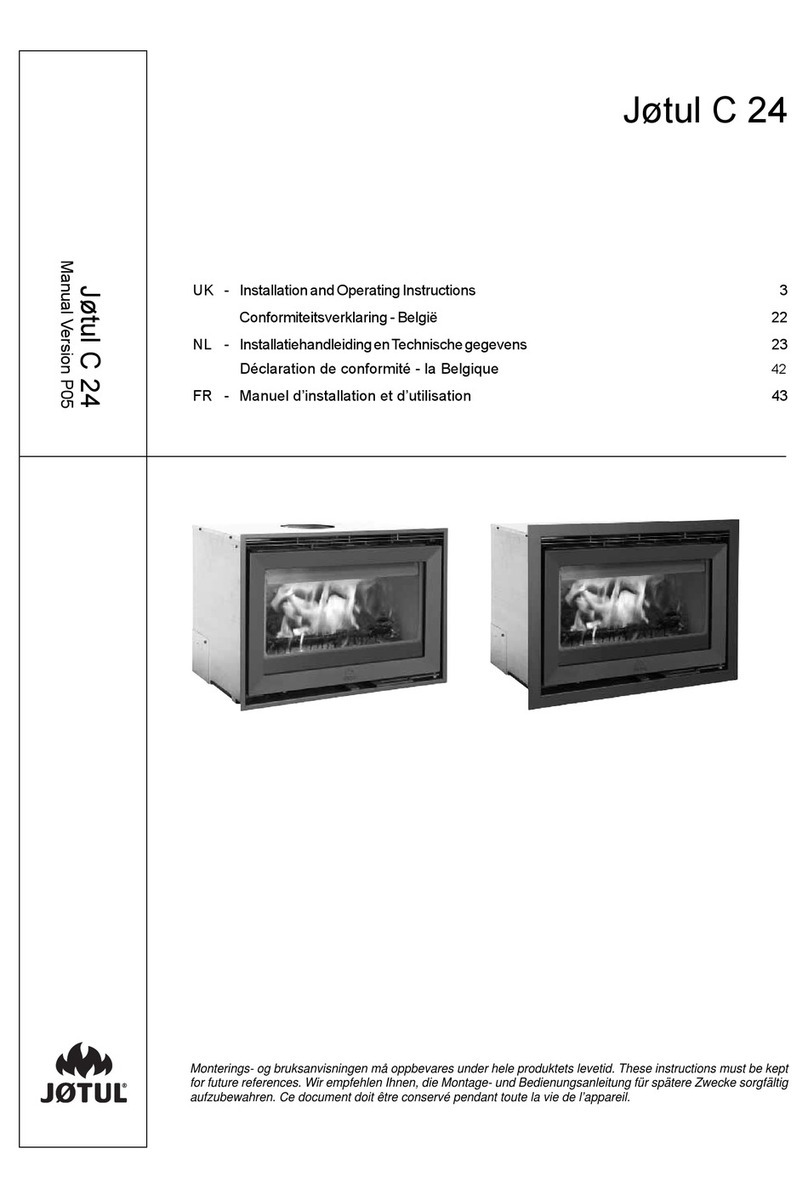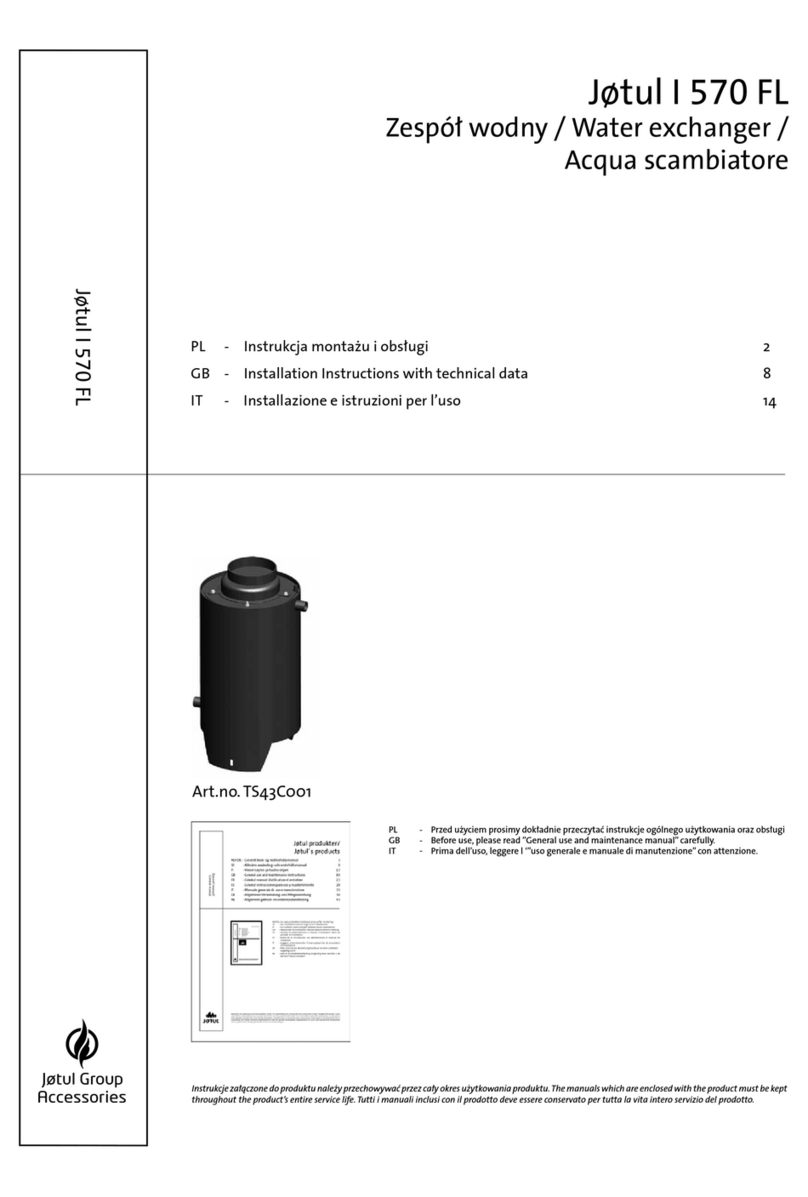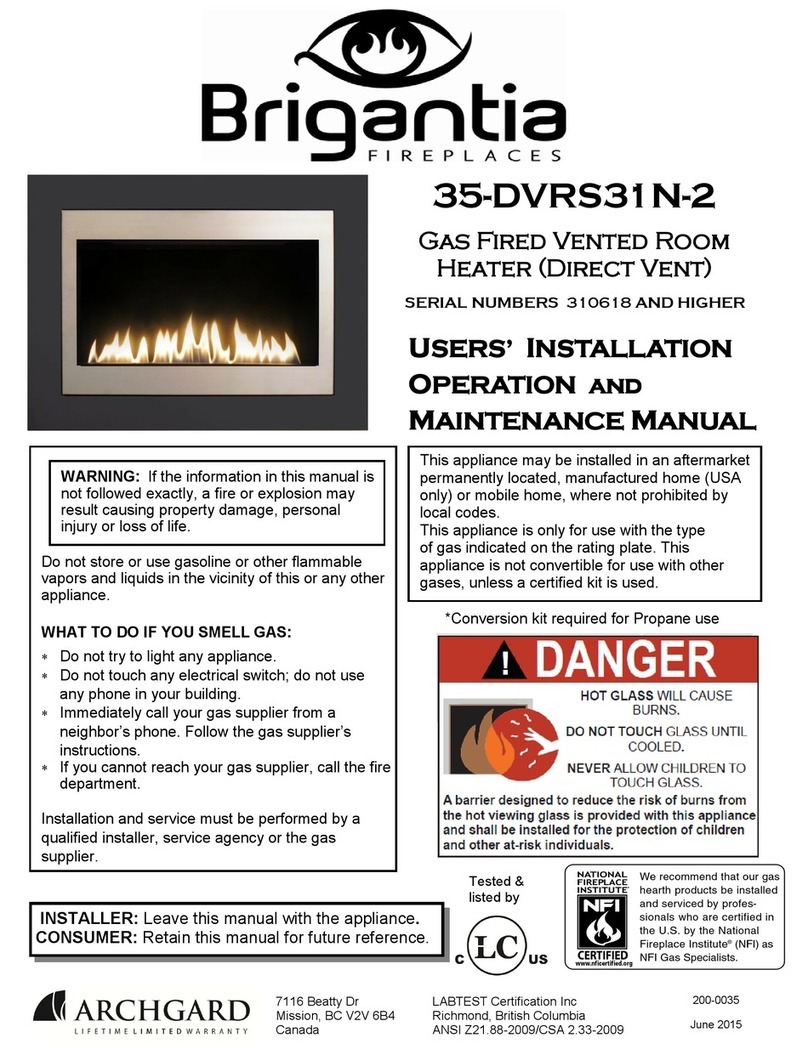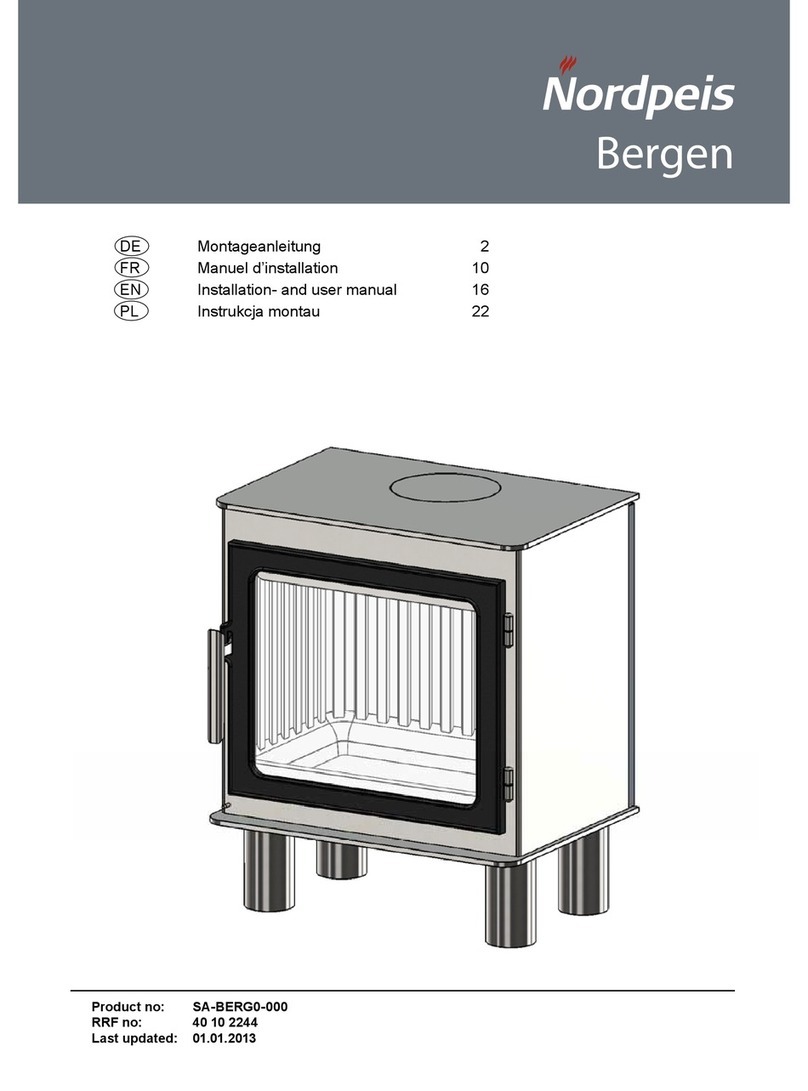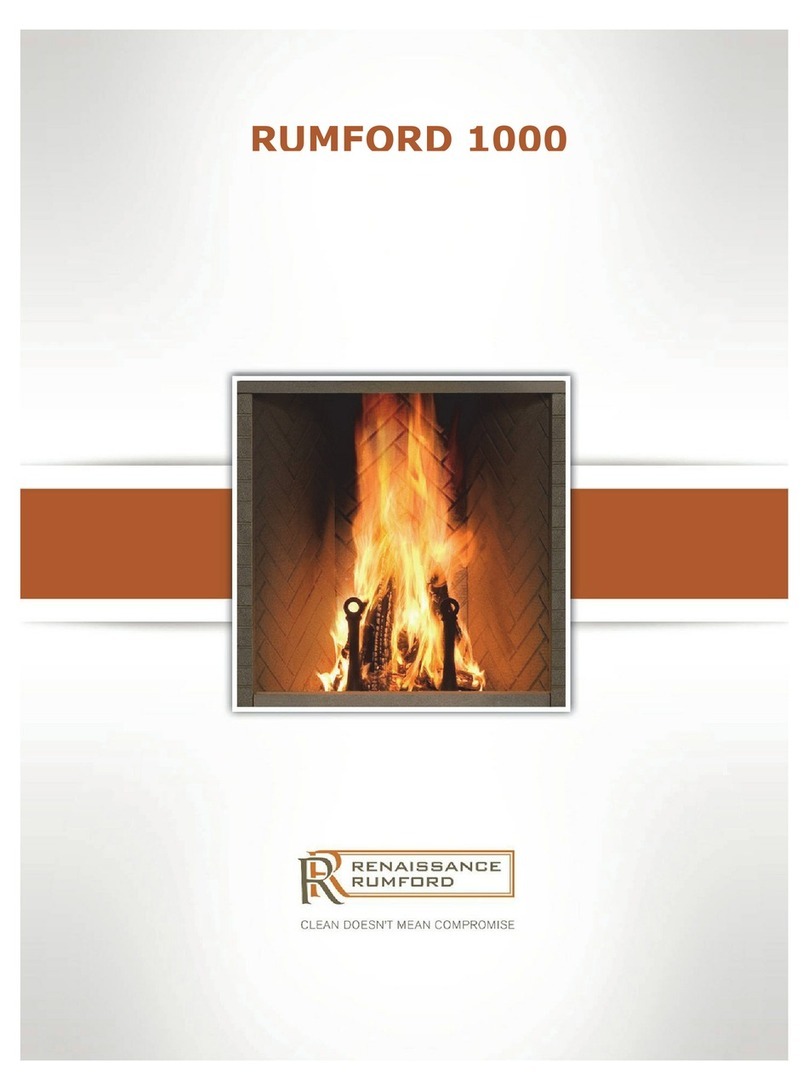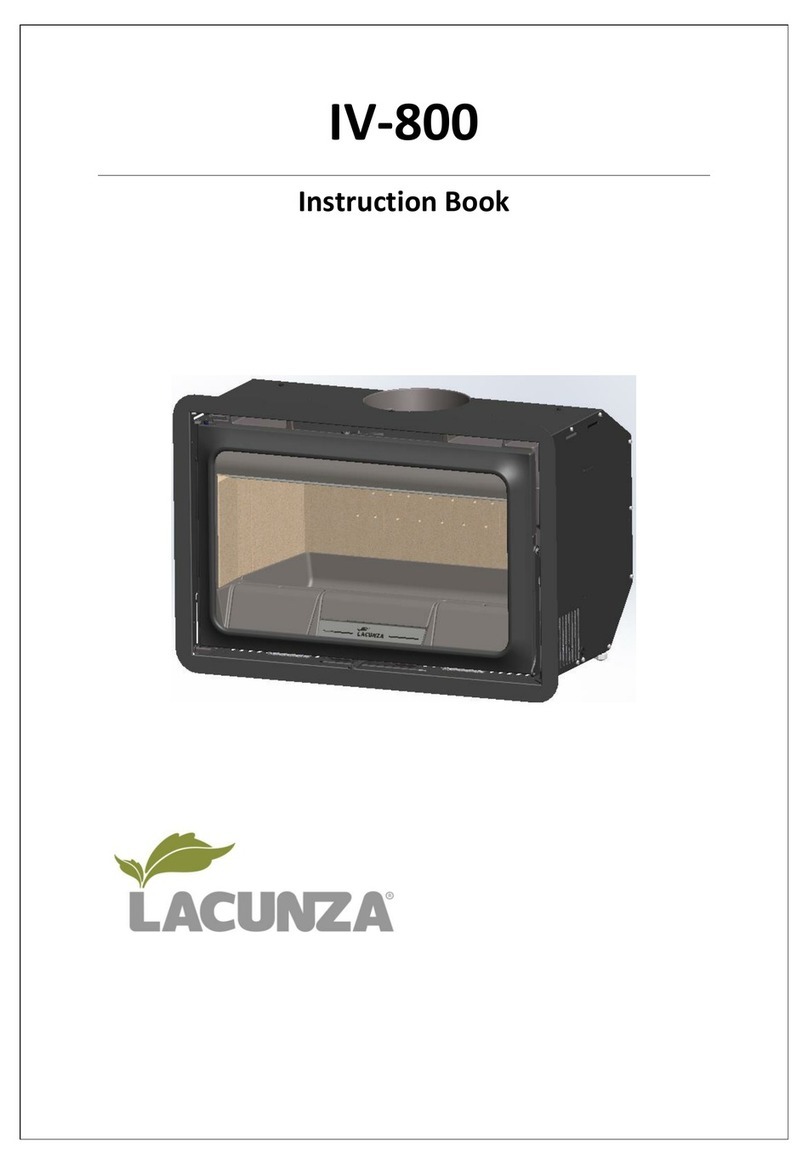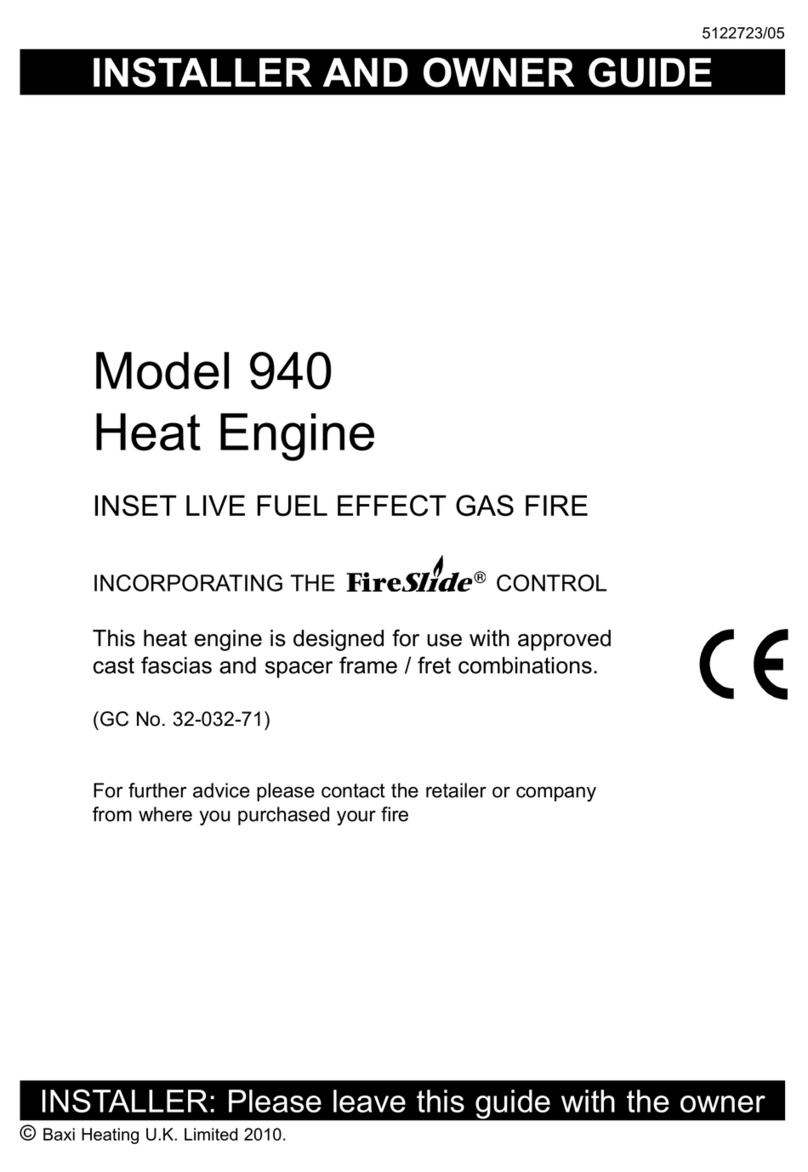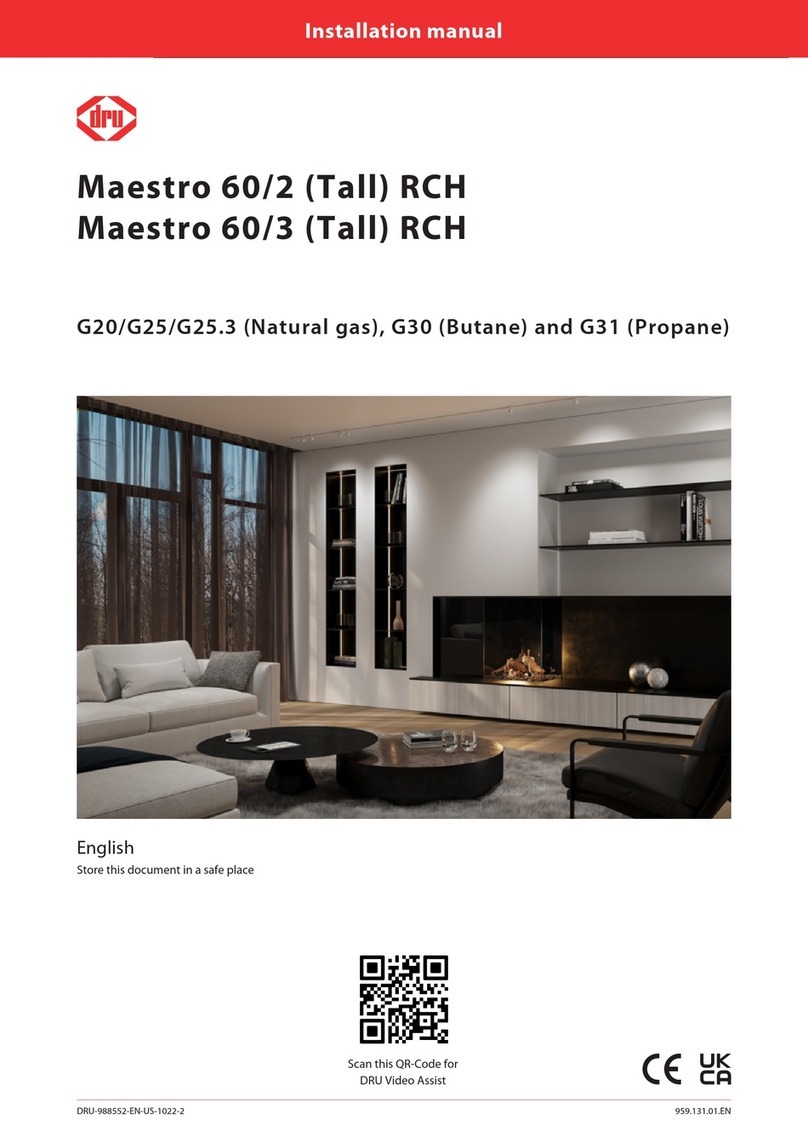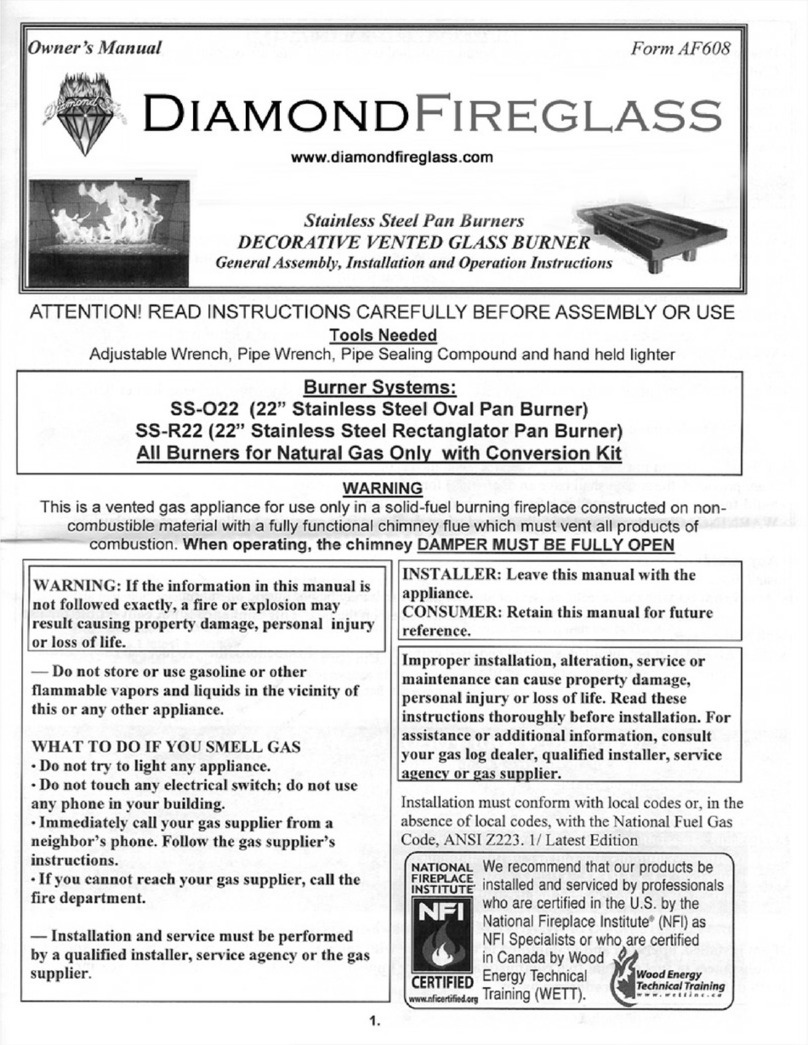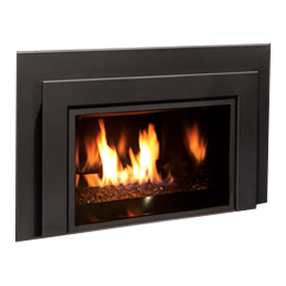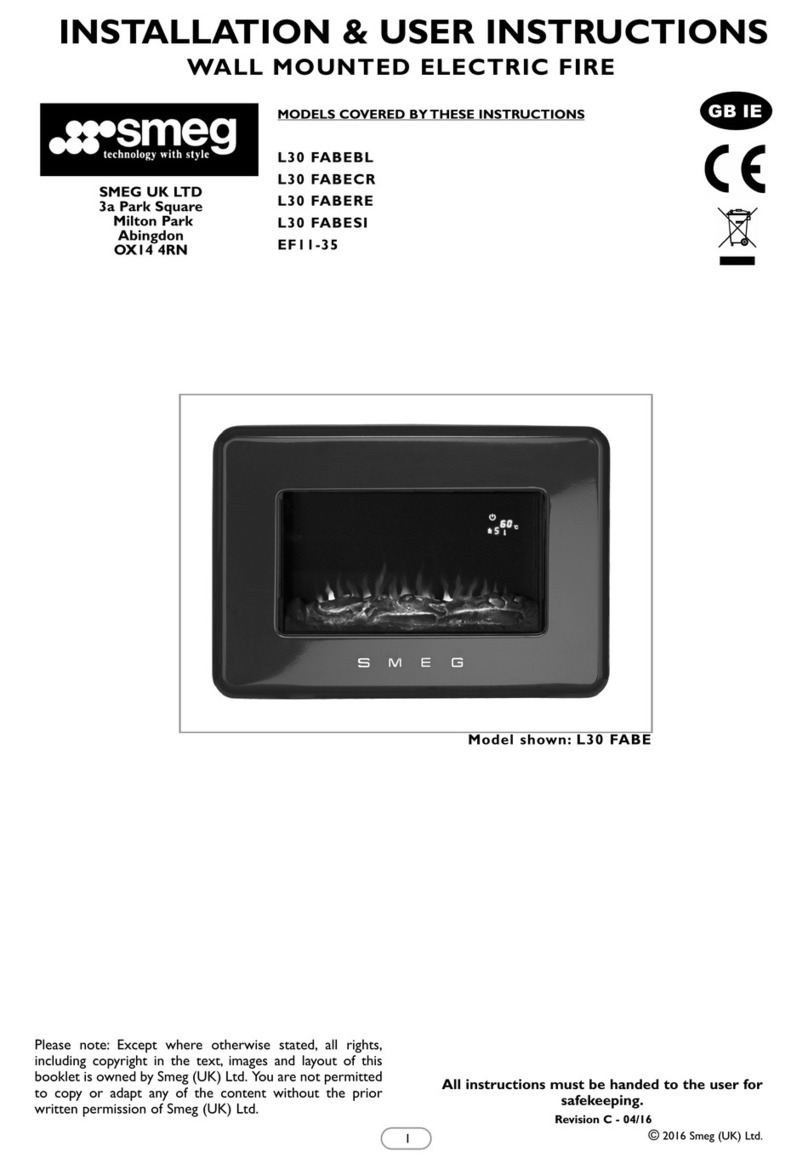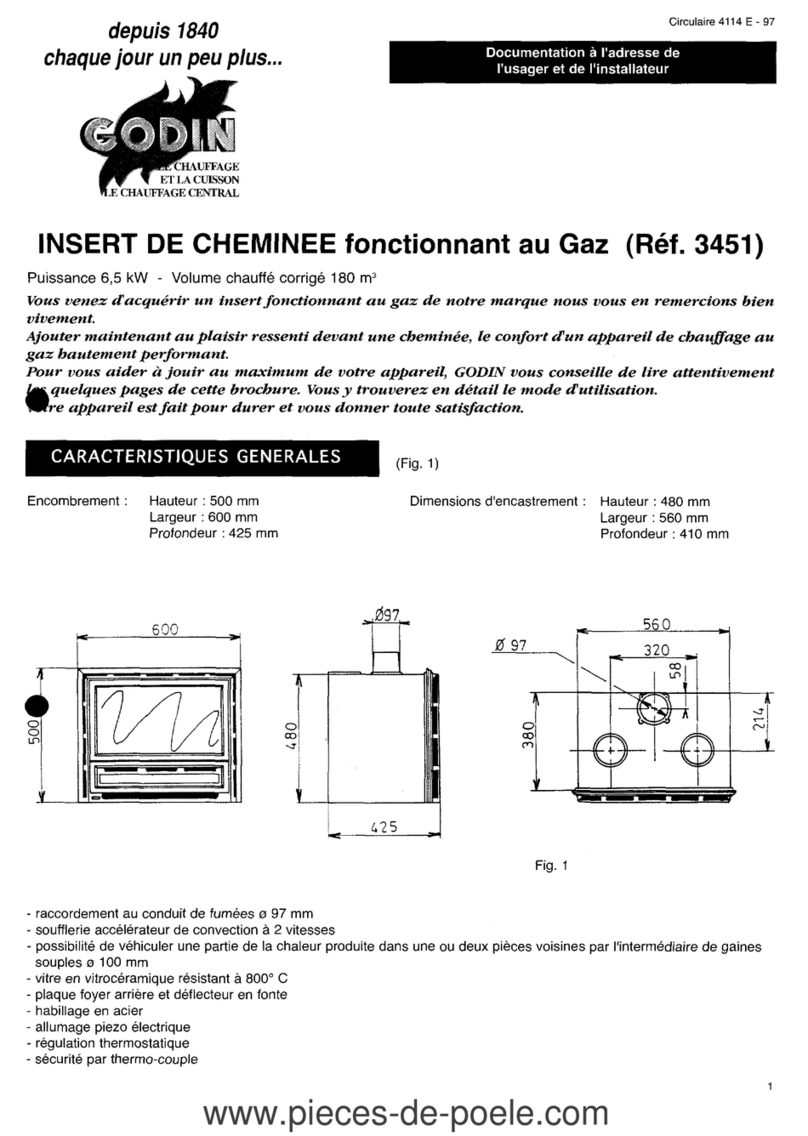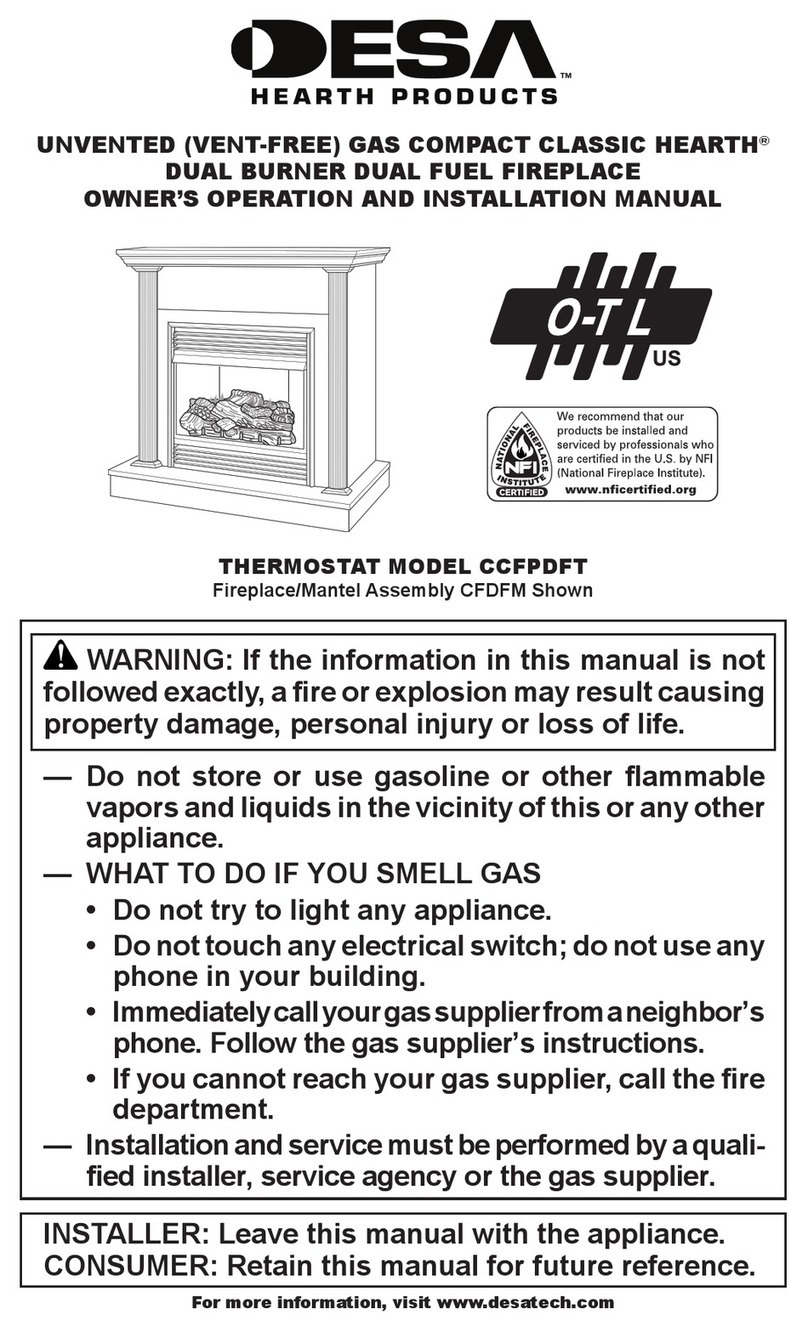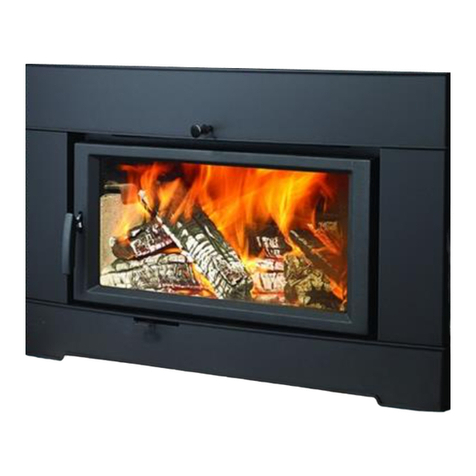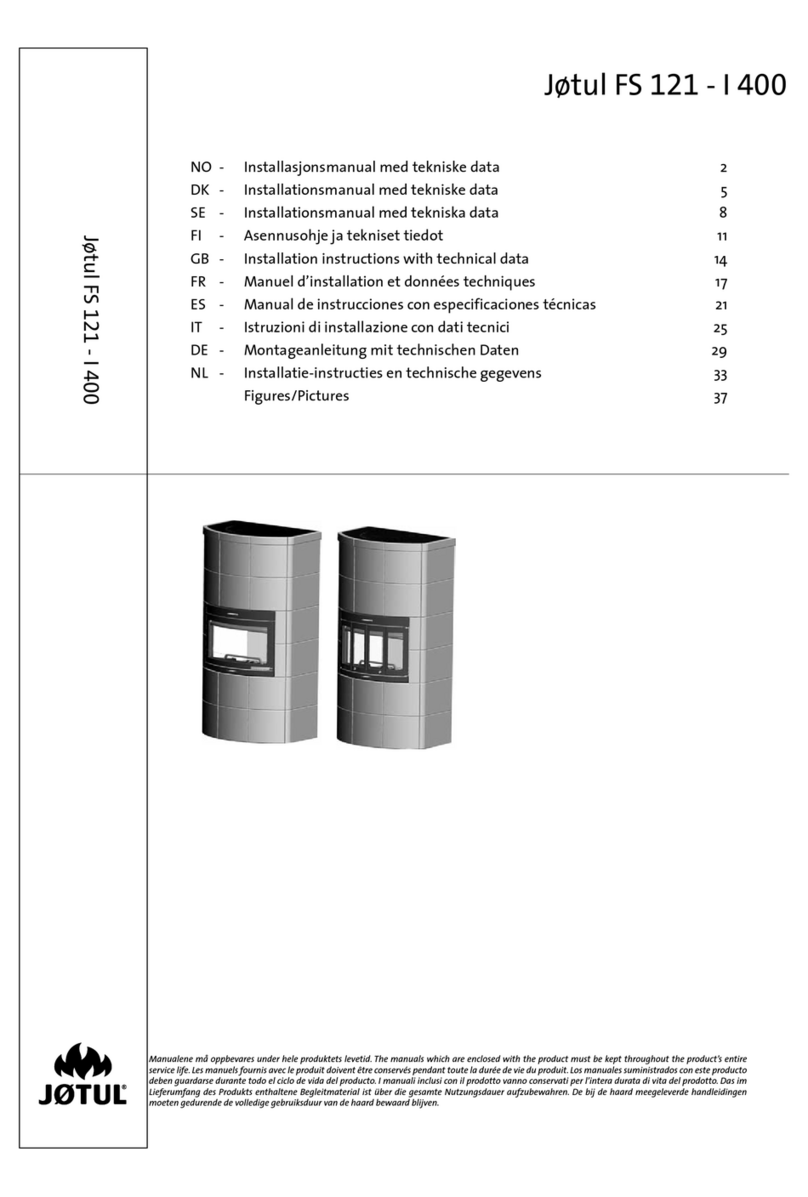4
Technical data in acc. with EN 13240 / NS 3058
Nominal heat output: 6,0 kW
Flue gas volume: 6,3 g/s
Chimney draught, EN 13240: 12 Pa
Recommended negative pressure
in smoke outlet: 14-16 Pa
Efficiency: 78%@6,8 kW
CO emissions (13% O2): 0.06%
CO emissions (13% O2): 731 mg / Nm3
NOx at 13% O2: 93 mg / Nm3
OGC @ 13 % O2: 45 mg/Nm3
Air consumption: 6,1 litre/sec or 22 m3/h
Chimney temperature, EN 13240: 275 oC
Dust: <4 mg/Nm3@13%O2
Particle emission NS 3059: 2,9 g / kg
Type of fuel: Wood
Recommended log length: 27-30 cm
Max. log length: 33 cm
Fuel consumption: 2.1 kg/h
Max. kindling amount: 2.0 kg
Nominal kindling amount: 1.6 kg
Operation: Intermittent
Intermittent combustion in this context means normal use of the
fireplace,i.e. fuel is added as soon as the fuel has burnt down to
a suitable amount of embers.
3.0 Safety
NB! To guarantee optimal performance and safety, Jøtul
recommends that its stoves are fitted by a qualified
installer (see www.jotul.com for a complete list of dealers).
Any modifications to the product may result in the product
and safety features not functioning as intended. The same
applies to the installation of accessories or optional extras not
supplied by Jøtul. This may also be the case if parts that are
essential to the functioning and safety of the fireplace have
been disassembled or removed.
In all these cases, the manufacturer is not responsible or liable
for the product and the right to make a complaint becomes null
and void.
The Clean Air Act
“The Clean Air Act 1993 and Smoke Control Areas”
Under the Clean Air Act local authorities may declare the
whole or part of the district of the authority to be a smoke
control area. It is an offence to emit smoke from a chimney of
a building, from a furnace or from any fixed boiler if located in a
designated smoke control area. It is also an offence to acquire
an “unauthorised fuel” for use within a smoke control area
unless it is used in an “exempt” appliance (“exempted” from
the controls which generally apply in the smoke control area).
The Secretary of State for Environment, Food and Rural
Affairs has powers under the Act to authorise smokeless
fuels or exempt appliances for use in smoke control areas in
England. In Scotland and Wales this power rests with Ministers
in the devolved administrations for those countries. Separate
legislation, the Clean Air (Northern Ireland) Order 1981,
applies in Northern Ireland. Therefore it is a requirement that
fuels burnt or obtained for use in smoke control areas have
been “authorised” in Regulations and that appliances used to
burn solid fuel in those areas (other than “authorised” fuels)
have been exempted by an Order made and signed by the
Secretary of State or Minister in the devolved administrations.
Further information on the requirements of the Clean Air Act
can be found here : http://smokecontrol.defra.gov.uk/
Your local authority is responsible for implementing the Clean
Air Act 1993 including designation and supervision of smoke
control areas and you can contact them for details of CleanAir
Act requirements”.
Your local authority is responsible for implementing the Clean
Air Act 1993 including designation and supervision of smoke
control areas and you can contact them for details of CleanAir
Act requirements”
3.1 Fire Prevention Measures
There is a certain element of danger every time you use
your fireplace. The following instructions must therefore be
followed:
• The minimum safety distances when installing and using
the fireplace are given in fig. 1. The specified distance to
flammable materials, applies to this stove. The stove must
be installed with a CE approved flue. The distance of the
flue pipe to combustible materials must also be observed.
• Ensure that furniture and other flammable materials are not
too close to the fireplace. Flammable materials should not
be placed within 1100 mm of the fireplace.
• Allow the fire to burn out. Never extinguish the flames with
water.
• The fireplace becomes hot when lit and may cause burns
if touched.
• Only remove ash when the fireplace is cold.Ash can contain
hot embers and should therefore be placed in a non-
flammable container.
• Ash should be placed outdoors or be emptied in a place
where it will not present a potential fire hazard.
In case of chimney fire:
• Close all hatches and vents.
• Keep the firebox door closed.
• Check the loft and cellar for smoke.
• Call the fire service.
• Before use after a fire an expert must check the fireplace
and the chimney in order to ensure that it is fully functional.
3.2 Floor
Foundation
Youneed tomake surethefoundationissuitablefor afireplace.
See “2.0 Technical Data” for specified weight.
We recommend the removal of any flooring that is not attached
to the foundation (“floating floors”) beneath the installation.
Requirements for protection of wooden
flooring beneath the fireplace
Jøtul F 370 Advance Series has a heat shield underneath
which protects the base from radiation. The product has
an integrated floor protection and may therefore be placed
directly on a wooden floor.
ENGLISH




